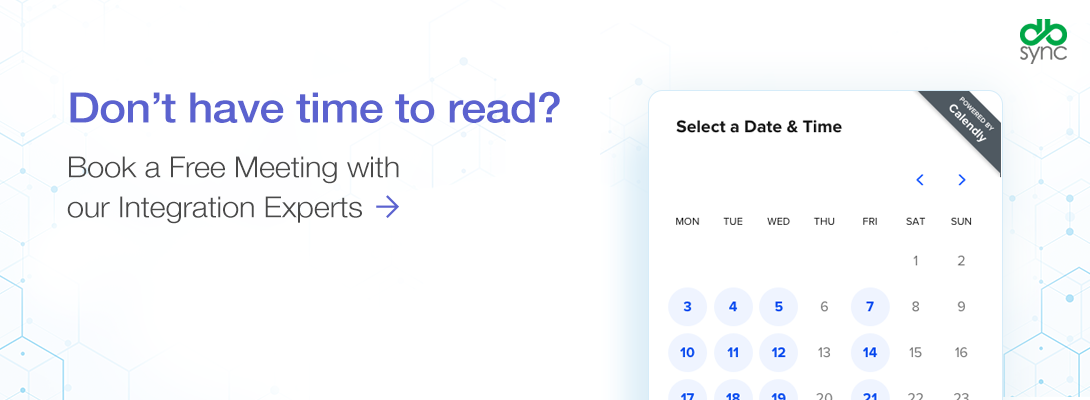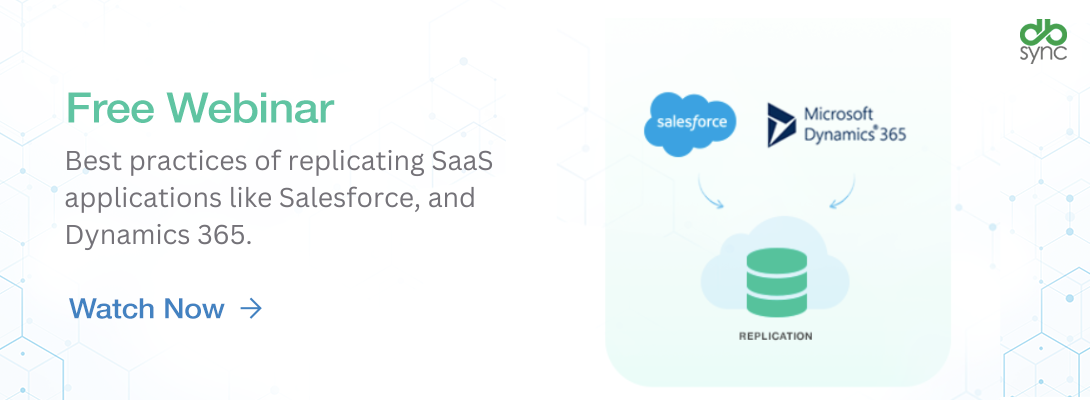DBSync Data Replication Tool: Key Functions
A brief explanation of its functionalities and uses
Replication is about identifying changes and updating other data sources. Its applications are many. From data warehousing to business intelligence and compliance.
Our replication tool has many useful functionalities that can help you achieve those goals based on your business strategies. Thus, a good understanding of their scopes and differences is vital to obtain the maximum benefit from the tool.
In this article, you will learn why replication is essential by analyzing several possible use scenarios. Following this, you will understand the main features of the software and their differences, and the different ways you can run the tool.

So, let’s start by understanding where replication has a place in your business.
Why is replication important?
Replication is an integral part of your daily business tasks because by identifying changes, it keeps your data up to date in all data sets. This can be easily seen in the several potential use cases of our DBSync Replication tool. These possible uses are:
- Staging a database for data warehousing: our replication tool can be used to create the schema for a data warehouse. In addition, once the warehouse structure has been defined, our tool can be used to populate it.
- Create datasets for business intelligence and reporting: business intelligence and reporting need specialized data. Our tool helps you to create tailored datasets, which can be used as a data feed for specialized applications and reports
- Create backups and archives: backups and archives are part of the life of the DBA. Our tool helps your business by automating many of the functions, thus, freeing the DBA’s time to do more valuable tasks. Archives are also an important part of regulatory compliance. Automating data archiving according to your business characteristics is one of the best ways to ensure compliance.
- Integrate Salesforce with in-house applications: Salesforce is a powerful application. However, when working in combination with other apps it is even more powerful. DBSync replication tool can create the necessary data sets that feed those apps. Even more, once the data has been copied into a database, it can be combined with data from other sources, massaged and then, incorporated back into Salesforce.
- Create a data set for in-house application development: app development needs data for many of its phases, such as testing. By using our tool, your developers can create tailored and updated data sets, with the added advantage that your production data remains untouched.
Having seen some examples that explain why replication is a must in your business, let’s see the main characteristics of the DBSync Replication tool, which define its applicability in your industry.

Pre-Recorded Webinar – Best Practices When Replicating SaaS Applications like Salesforce and Dynamics 365.
What are the main characteristics of the DBSync Replication tool?
The DBSync Replication tool has several important technical aspects that define its scope and applicability. The most important ones are:
- Auto-creation of new fields: when a new field is added to the Salesforce schema, it is automatically incorporated in the database structure. This ensures that your structure remains updated in your backups and other data sets, and by being automated, frees the task from the DBA list of “to do”.
- Downloading of objects/tables into a database: our tool allows you to download Salesforce objects/tables into a database of your choice.
- Uploading of data from a local database to Salesforce: you can upload data from a local database to Salesforce.
- Incremental updates: our tool automatically tracks any data changes. Thus, you never miss any changes done, thereby, reducing the number of errors and freeing up the time of your DBA for other more important tasks.
- Migration of non-replicable objects: non-replicable objects are those entities whose changes cannot be tracked over time. Examples in Salesforce are LeadShare, AccountShare, and OpportunityShare. DBSync replication tool migrates them by copying the complete objects. This option is available in the Database Details section of the program.
- Real-time integration using outbound messages: by using Salesforce’s outbound messaging capability, our integration tool helps you to have practically real-time integration.
Having understood the main technical aspects of our tool, let’s learn the main ways in which you can to use it.
How can I use the DBSync Replication tool?
Using the DBSync replication tool is straightforward. The system guides you step by step. First, you need to define your source and destination information. For example, you will have to input the credentials for your database and Salesforce.
Once your source and destination information are complete, you can run the replication tool. There are six-run options available, which are:
- Clean copy: a Clean Copy is a copy of all the data available in a Salesforce instance. In other words, it copies all existing records in Salesforce to a database of your choice. The clean copy can be scheduled via the Scheduler, and thus, used as a backup tool.
- Update schema: updates only the schema or structure of a database. Thus, it copies the tables and their columns with their respective names existing in the source database to the destination database. No data is copied from the source to the destination. Update schema comes in handy when we want to create a new instance of a database.
- Source to DB (database): provides an incremental backup. In other words, it copies the records that are in the source (for example, Salesforce), but don’t exist in the database, and updates the database with those records that have been changed in Salesforce. This option can be used as a complement of the Clean Copy option, in a backup tool. For example, a backup strategy could be a clean copy scheduled every Friday night, and incremental backups scheduled daily.
- DB (database) to Source: this option is similar to the previous one but in a reversed flow. In other words, in the source (for example, Salesforce), it creates the records that exist in the database but not in the source, and updates those that have been changed in the database, but not in the source.
- Snapshot: a snapshot is a copy of the whole Salesforce database, which can be restored. Its name includes a time reference. Thus, snapshots become very useful for legal compliance or proof in case of litigation, as each of them is a copy of the data contained in Salesforce, at a point in time.
- Export: allows the user to connect two different instances of Salesforce. In other words, to transfer data from a Salesforce instance to another different Salesforce instance. This option is useful when you need to create a new Salesforce instance based on another one.
Download the Free Developer Version Now
Unleash the true potential of your Salesforce cloud data with ease. Say goodbye to hidden APIs and inaccessible information. Experience the game-changing benefits of DBSync’s innovative solution that revolutionizes data replication and delivery for your IT needs.
Why choose DBSync?
✅ Reduce compliance requirements effortlessly
✅ Enhance insights for better decision-making
✅ Leverage prebuilt solution and replication capabilities
Maximize compliance and security effortlessly with our streamlined four-step setup process:
1️⃣ Step 1: Download our Developer version now.
2️⃣ Step 2: Effortlessly set up with our user-friendly interface.
3️⃣ Step 3: Seamlessly replicate Salesforce data into your database.
4️⃣ Step 4: Achieve unrivaled compliance and security without any hassle.

Download, Install, and Run with our Free Forever Trial. (All Under 1 hr)
Summarizing
In this article, you have seen why replication is vital to your business and the main characteristics of our DBSync Replication tool. With the growth of data that characterizes our present times and the need for up to date information, the use of replication continues to grow, as it does the number of applications of our tool.
Ready to learn more? Go to our page and try our software, or contact one of our representatives. We are there to serve you and make your business grow.
